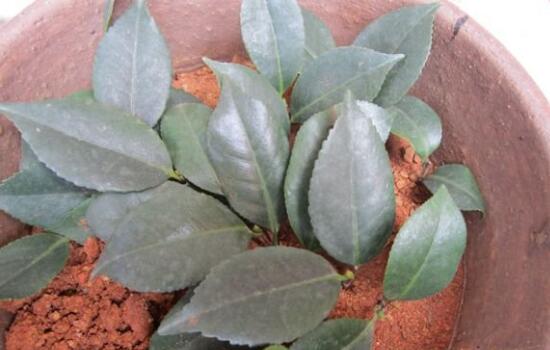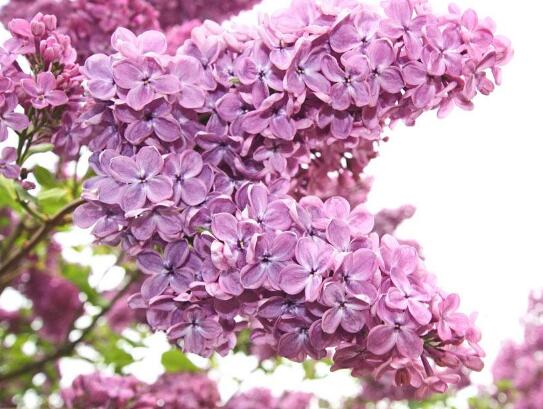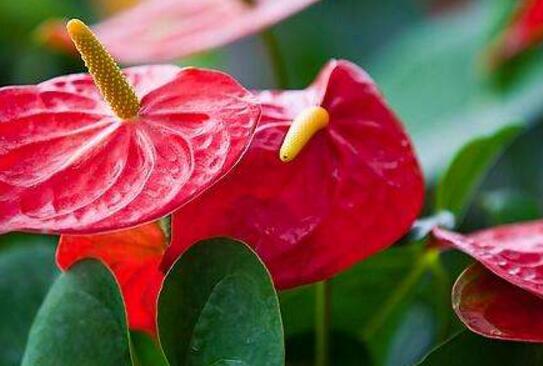How to propagate camellias, the survival rate of four propagation methods / cutting methods of camellias is 100%.
Camellia, a very beautiful flower, is loved by people for its beautiful shape and rich colors. In life, raising a few pots of camellias at home is the choice of many people, and many of them go to the store to buy them directly. In fact, in addition to buying existing camellia pots, you can also breed by yourself. Here are four breeding methods of camellias. Follow the editor to have a look.
First, how to propagate camellias, cutting / leaning / leaf cutting / high cutting

As one of the top ten famous flowers in China, camellia is an indoor potted plant for many people. However, a pot of camellias is very monotonous, and it is only enjoyable to plant multiple pots together. If you don't want to go out and buy it, you need to do it yourself. as for how camellias reproduce, there are four methods: cutting, leaning, leaf cutting and high cutting, and how to do it. Let's move on.
2. Four propagation methods of camellias (1) cutting methods of camellias
There are many propagation methods of camellia, both sexual reproduction and asexual reproduction can be used, but the most commonly used is cutting and grafting. Among them, the cutting method of camellia is relatively simple, let's introduce it in detail.
① cutting time
How to reproduce camellias must first choose the right time. The cuttage propagation of camellias is best selected in September, or in the middle of May in spring.
② cuttings selection
In the cutting method of camellia, the selection of cuttings is particularly important, it will directly affect the survival rate of reproduction. On a sunny day in September, well-nourished and robust semi-lignified branches were cut as cuttings.
Cuttings treatment: the length should be cut to about 6-10cm, preferably with 2 prime 3 nodes. Then remove the basal leaves, keep the upper 3 leaves, and cut them into bevel with a sharp knife. After that, disinfect the cuttings, apply some carbendazim to the wound, and then leave it in a cool and ventilated place to dry.
③ cuttage start
After the cuttings are dried in the sun, they can be inserted into a sand basin or vermiculite basin, or they can be inserted into a container filled with water. pay attention to keeping them moist, and they will take root in 2 weeks. Generally speaking, cuttings are very easy to survive, and if handled properly, the survival rate of camellia cuttings can reach 100%.
(2) the connection method of camellias.
It is one of the most common propagation methods of camellias. It mainly breeds precious camellias. Rely on the rootstock: generally choose Camellia oleifera; connecting time: between Ching Ming Festival and the Mid-Autumn Festival.
Connection method: plant the rootstock in a flowerpot, cut off about half of the parts you want to combine with a knife, and pay attention to a smooth incision. Then, close the cut sections of both sides, wrap them with plastic film, and water the rootstocks twice a day.
Maintenance: it can be healed after 60 days, cut off and planted at that time, and placed in the shade to avoid direct sunlight. In February of the following year, the tail of the rootstock was cut off with a knife, then planted, and then maintained according to the culture method of camellias.
(3) Leaf insertion of camellias.
Considering the limitation of the source of valuable camellia branches, the leaf insertion method was adopted to propagate into a choice. The specific operations are as follows:
Cutting substrate: the mountain mud is mixed with 1P3 river sand to ensure good ventilation and drainage. Then put the matrix in an earthen basin.
Cuttings selection: one-year-old leaves can be used as leaf cuttings, pay attention to the leaves can not be too old or too young, too old not easy to root, too tender and perishable.
Start cutting: insert the selected leaves into the soil about 2 cm deep, press the soil, pour enough water, and then put it in a cool and ventilated place. Generally, it can take root in 3 months, and it can sprout and branch in the next spring.
(4) High insertion of camellias
In addition to the above three, high insertion is also one of the propagation methods of camellias, which is characterized by the ability to attach all the weak twigs that should have been pruned to new life. More importantly, this method has high survival rate, quick rejuvenation and early flowering, so it is very suitable for beginners to try. The specific operations are as follows:
The thin branches that need to be pruned are girdled in an appropriate position. The length of the girdling can be between 5-8 mm. The plastic film of appropriate size is bound, and the disinfected peat soil or rotten leaf soil is added into the film. After 7-10 days, the lower part of the plastic film is then girded for 5-8 mm, and then a new life is born!
Generally speaking, camellia has strong vitality, and the four breeding methods are easy to survive, but in terms of convenience and survival rate, cutting and grafting are the best. Of course, the method is dead, people are alive, we can according to the actual situation, choose the method to breed. With regard to the breeding methods of camellias, this is the end of the editor's introduction, hoping to bring help to everyone.
How do camellias reproduce? Key points for attention of cutting Propagation techniques of Camellia
Camellia is favored by flower friends because of its beautiful plants and colorful flowers. But some florists don't know how to reproduce camellias. In fact, camellia can be propagated by cutting, pressing, sowing and other methods, but for ordinary flower friends, cutting is the most practical method of propagation. Next, we will take you to understand the key points of the cutting propagation technology of camellia.
Picture: Camellia
1. Cutting time
Take Fujian area as an example, most of them are planted in the nursery on the ground from June 10 to 30, and can also be cut in mud basin or wooden box containers.
Second, the selection of cuttings
Select the current year's twigs, and take the annual semi-mature branches with full outer tissue of the crown, complete leaves and full leaf buds as cuttings, with a length of 8 cm to 10 cm and 2 leaves at the apex.
Third, cutting and cutting
When cutting, the base takes a little old branch as much as possible, it is easy to form callus after insertion, and the root is fast. Cut the cuttings early in the morning and insert them whenever you want.
Picture: Camellia
4. Cutting methods
Insert the seedbed substrate about 3 cm, require the leaves to hand over each other when cutting, press solid with fingers after cutting, and dip 0.4% 0.5% indolebutyric acid solution into the base of the cuttings for 2-5 seconds, which can obviously promote rooting. It is better to insert it shallowly, so that it can heal and take root quickly.
Fifth, plug-in management
The cutting seedbed needs shade, spray the leaves with water every day, keep it moist, keep the temperature at 20-25 ℃, heal about three weeks after cutting, and take root after six weeks. When the root length is 3 cm to 4 cm, it can be transplanted into the pot. When the base minister has new roots, and the top of the branch has new shoots and new leaves, it can be transplanted.
VI. Surviving Transplantation
Cuttings that survive are generally transplantable from mid-September to early October of that year. If there is no transplant at this time, it would be better to wait for transplantation in March of the vertical year, so that more roots can be grown in the same place, and the survival rate after transplantation will be higher. This time coincides with another growth period of camellias, which has many benefits for growth and development. It should be noted that if the cutting medium is river sand or rice chaff ash, it should be transplanted and planted as soon as possible after rooting and growing leaves, because of the lack of nutrition in these media, the growth of survival seedlings in the nursery will be affected for a long time.
How do camellias reproduce? Propagation methods of Camellia
Camellia is a common indoor potted plant with emerald green leaves and rich flowers and colors, which has high ornamental value. In the maintenance process of camellias, reproduction is a very important link. There are many propagation methods of camellias, such as cutting, grafting, leaf cutting and so on. So, how do camellias reproduce? The following is to introduce the breeding methods of camellias, together to understand it.
Picture: Camellia
I. Cuttage propagation
The cutting propagation of camellias is the most convenient, and the most suitable cutting time is in September, and it can also be in spring. Select the well-growing, semi-lignified branches, remove the basal leaves, retain the upper 3 leaves, cut them into an oblique orifice with a sharp knife, immediately soak the incision in 200-500ppm indolebutyric acid for 5-15 minutes, then insert it into a sand basin or vermiculite basin after drying, water the wound for about 40 days, and take root for about 60 days. The cuttings treated with hormone took root 2-3 months earlier than those without hormone. Vermiculite is used as a slotting bed, and it takes root much faster than a sand bed.
II. Relying on grafting for reproduction
Choose appropriate varieties such as tea or Camellia oleifera as rootstocks to pick up valuable camellias. The connecting time is usually between Ching Ming Festival and the Mid-Autumn Festival. First plant the rootstock in the flowerpot, cut off about half of the joint with a knife, the incision should be smooth, then make the cut of both sides closely fit, wrap it with plastic film, drench the rootstock twice a day, and heal after 60 days. At that time, it can be cut off and planted in the shade of trees to avoid direct sunlight. In February of the following year, the tail of the rootstock was cut off with a knife and then planted.
Picture: Camellia
(3) Leaf cutting propagation
The leaf cuttage method is generally used for camellia propagation, but some valuable varieties are also used because of the limitation of the source of branches or considering that the tree shape will be affected after sampling. Using mountain mud as the cutting substrate, it can be mixed with 1 stroke 3 river sand to facilitate ventilation and drainage, and the matrix is stored in a tile basin, and then cut in the basin. Leaf insertion is best carried out in the rainy season, take one-year-old leaves as leaf insertion material, too old is not easy to root, too young and easy to rot. Insert about 2 cm into the soil, press the soil after insertion, pour enough water, and then put it in a cool and ventilated place. Generally, it can take root in 3 months, and it can sprout and branch in the next spring.
IV. High insertion propagation
The most important feature of the high-altitude cutting method is that it can give new life to all the weak twigs that should have been trimmed off from the camellias. And this method has the advantages of high survival rate, quick rejuvenation and early flowering. The method is as follows: the thin branches that need to be pruned are girdled in an appropriate position. (generally, the upper part can be left into 15-25 cm branches) the girdling length can be between 5-8 mm, and the plastic film of appropriate size is bound. The film is filled with peat soil or rotten leaf soil that has been sterilized, and after 7-10 days, the lower part of the plastic film is peeled again for 5-8 mm, which is called double-ring peeling high insertion method.
Picture: Camellia
5. Tree grafting propagation
Grafting propagation of camellia has many advantages, which can maintain the excellent characters of varieties, accelerate plant growth and make it take shape rapidly and produce on a large scale. It is especially important to save panicle strips, especially for those rare varieties with few sources of panicle strips. The suitable grafting time is from June to July, when the new leaves of camellia scion have been unfolded, the temperature is high, the grafting wound heals quickly and the survival rate is high. The grafting method is the cutting method in the grafting method, which is often called "high grafting head" because of the high position of grafting.
[conclusion] Camellia propagation can be divided into sexual reproduction and asexual reproduction, among which cutting propagation and docking propagation are the most common. Successfully mastering the propagation method of camellia is of great significance to the planting of camellias. The above introduced the propagation methods of camellias, I hope it can be helpful to you!
- Prev

How to breed lilac flowers, lilac flower propagation method/sowing, cutting, layering
Lilac is a well-known flower, has a very high ornamental value, in various regions of our country, it has been cultivated, so how to reproduce lilac has become a more concerned problem, about lilac reproduction methods what? The following small series takes everyone to understand
- Next

How to reproduce Anthurium andraeanum, the method of propagation of Anthurium andraeanum / diagram of three common methods
As more and more people like Anthurium andraeanum, some people prepare a variety of pots or give them to friends, and the better way is to breed, so how to reproduce Anthurium andraeanum? The editor will introduce several common breeding methods of Anthurium andraeanum. How to reproduce Anthurium andraeanum several methods of propagation of Anthurium andraeanum commonly used by botanists at present
Related
- Fuxing push coffee new agricultural production and marketing class: lack of small-scale processing plants
- Jujube rice field leisure farm deep ploughing Yilan for five years to create a space for organic food and play
- Nongyu Farm-A trial of organic papaya for brave women with advanced technology
- Four points for attention in the prevention and control of diseases and insect pests of edible fungi
- How to add nutrient solution to Edible Fungi
- Is there any good way to control edible fungus mites?
- Open Inoculation Technology of Edible Fungi
- Is there any clever way to use fertilizer for edible fungus in winter?
- What agents are used to kill the pathogens of edible fungi in the mushroom shed?
- Rapid drying of Edible Fungi

